Written by Winemaker Laura Barrett
Wine 101: Grape Skins
A wine grape is made up of many parts – the skin, the seeds, the pulp and the juice – all playing an important role in the winemaking process. The biochemistry of a grape can be quite complex and fascinating!
The skin of a grape holds much of the tannin that we extract into wine. Tannin is a phenolic compound that provides texture and structure to wine (also found in tea, coffee and in the oak staves of a wine barrel.) It is the “dry” sensation that you feel on your palate when you drink red wine. Both red and white grapes have tannin in the skin, but red wines are more tannic because we typically ferment on the skins of red grapes, extracting more into the wine. On the other hand, white juice is separated from the skins at the crush stage, so the finished wines have far less tannin.
Color is another important component of grape skins. All the pigment in a grape is in the skins – yes, all grape juice is clear! So, when we ferment red grapes on the skins we extract not only tannin, but color. Some grapes inherently have more pigment than others, for example a Pinot Noir has less pigment than Petite Sirah. This will impact the final color of the wine. This concept is also how we make Rose’ from red grapes. Rose’ wines are made by processing red grapes as if you were making a white wine. The clear juice is separated from the red skins at the crusher (with perhaps a few hours of soaking,) picking up just enough pigment to make the grape juice pink.
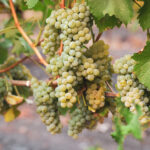
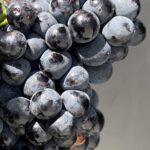
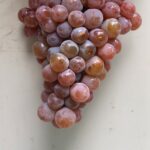
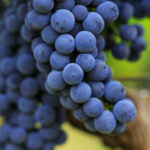
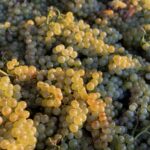
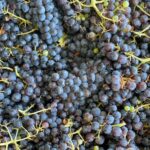
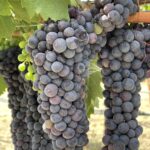
Grape skins are discarded after they fulfill their role in the process. For white grapes, they are typically discarded on the first day, after pressing the clear juice from the skins, seeds and stems. In a red fermentation, the skins are used for the entire length of fermentation, then separated from the finished wine. Time on the skins can be anywhere from 5 to 60 days! The waste can then be used to make compost which we may repurpose in the field the following season.
Extraction from the grape skins is an absolutely critical part of the winemaking process that requires stylistic direction, attention to detail and lots of tasting! So, whether you are making a fruity white wine, a light pink Rose’ or an extracted Howell Mountain Cabernet, attention to the grape skins plays a crucial role in the finished product.









